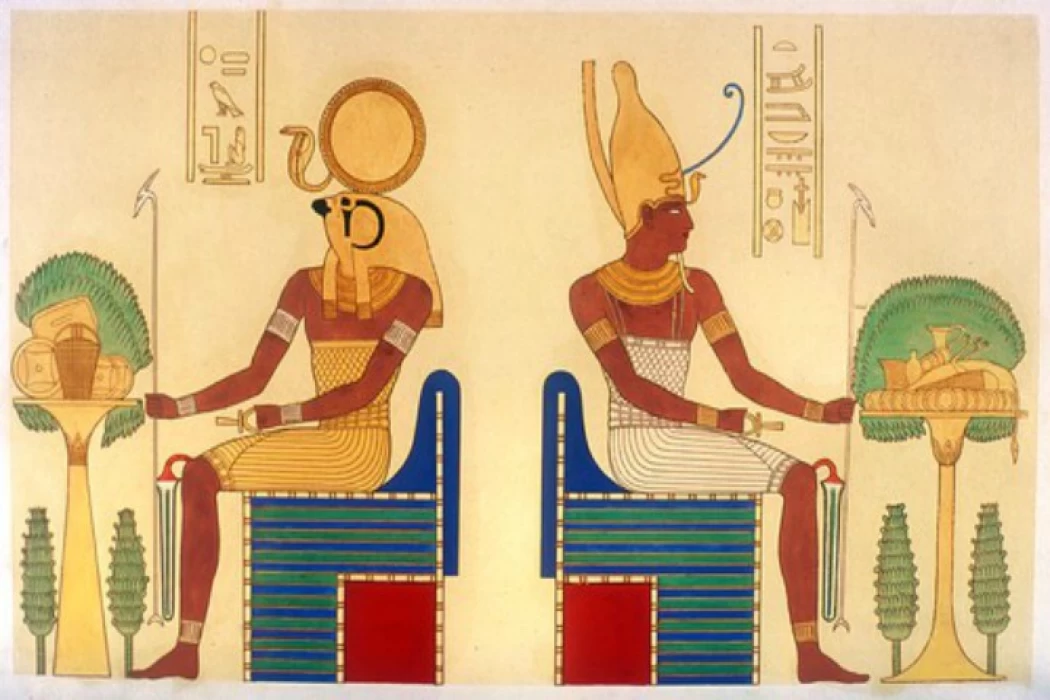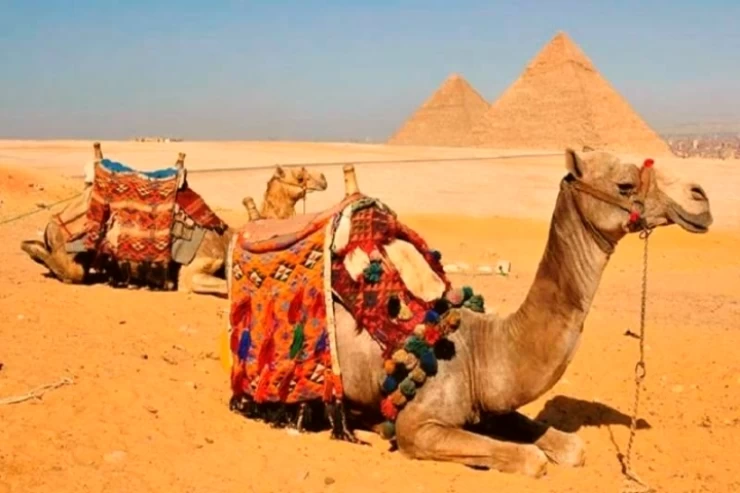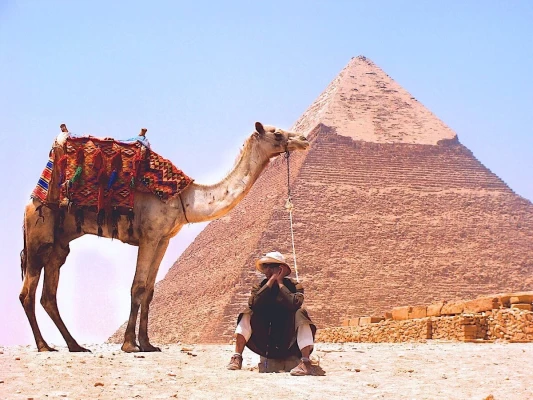
God Atum
God Atum
God Atum is one of the nine main deities of the Egyptian city of Heliopolis, and one of the most important Egyptian gods in this mythology. Because he is the creator of the universe, Atum is also known as Atem, Items, Atum-Ra, or Tem.
In Egyptian mythology, his origin is described as the emergence of a god from the primordial ocean. Existing before creation, Atum was the one who would initiate creation, as he gave life to his two sons, Shu and Tefnut, who were the gods of air and moisture, respectively.
The ancient Egyptians depicted him as a bearded man wearing a double crown. Atum was the first Egyptian deity to be depicted in human form, as he replaced Imy-Uaf, a serpent god. After this, Atum began his work of creation.
When depicted as a sun god, he wore the head of a ram, a phoenix, or a mongoose; on other occasions, he was depicted as a serpent, emerging from the primordial waters and renewing himself daily.
Also considered a sun god, he was linked to the god Amun Ra, who was the sun god. Atum represented the evening sun. Along with Ra and Khepri, they formed the triad of sun gods, Ra representing the god of midday and Khepri representing the sun goddess of dawn.
His role as a creator god connects him to all the gods, since, according to mythology, he was the one who initiated the creation of all the gods, including the rest of the Egyptian gods. From their children, Shu and Tefnut, Geb and Nut, the gods of the earth and sky, were born.
In turn, from the union of Geb and Nut, were born the other gods who would complete the ennead of Heliopolis, among them Isis, Nephthys, Osiris, Seth and Horus.
God Atum is one of the nine main deities of the Egyptian city of Heliopolis, and one of the most important Egyptian gods in this mythology. Because he is the creator of the universe, Atum is also known as Atem, Items, Atum-Ra, or Tem.
In Egyptian mythology, his origin is described as the emergence of a god from the primordial ocean. Existing before creation, Atum was the one who would initiate creation, as he gave life to his two sons, Shu and Tefnut, who were the gods of air and moisture, respectively.
The ancient Egyptians depicted him as a bearded man wearing a double crown. Atum was the first Egyptian deity to be depicted in human form, as he replaced Imy-Uaf, a serpent god. After this, Atum began his work of creation.
When depicted as a sun god, he wore the head of a ram, a phoenix, or a mongoose; on other occasions, he was depicted as a serpent, emerging from the primordial waters and renewing himself daily.
Also considered a sun god, he was linked to the god Amun Ra, who was the sun god. Atum represented the evening sun. Along with Ra and Khepri, they formed the triad of sun gods, Ra representing the god of midday and Khepri representing the sun goddess of dawn.
His role as a creator god connects him to all the gods, since, according to mythology, he was the one who initiated the creation of all the gods, including the rest of the Egyptian gods. From their children, Shu and Tefnut, Geb and Nut, the gods of the earth and sky, were born.
In turn, from the union of Geb and Nut, were born the other gods who would complete the ennead of Heliopolis, among them Isis, Nephthys, Osiris, Seth and Horus.
The name Atum means complete or perfect, and the ancient Egyptians believed that he created himself from himself on the top of the eternal hill, and who is the creator of the world, and he merged with the god Ra and was known as Atum Ra. The seat of his worship was in Ain Shams in the thirteenth district.
The importance of Atum and his relationship with the king continued throughout ancient history, as confirmed by texts from a papyrus dating back to the late period, currently preserved in the Brooklyn Museum... This papyrus refers to the importance of the god and his role in the festival marking the beginning of the year, which reaffirms the role of the king.
Atum, the creator god, was the ultimate source of royal power and authority, which was transferred to the deity Horus, the king... The title "Father of the King of Egypt" was bestowed upon Atum. The Book of the Dead's Chapter 148 describes the deceased's wish to remain near Atum in order to get power from him (and become strong in Atum's presence). In later times, some amulets in the shape of a lizard were hung around the neck as symbols of this deity.
















